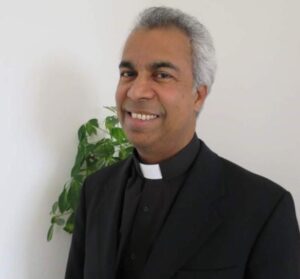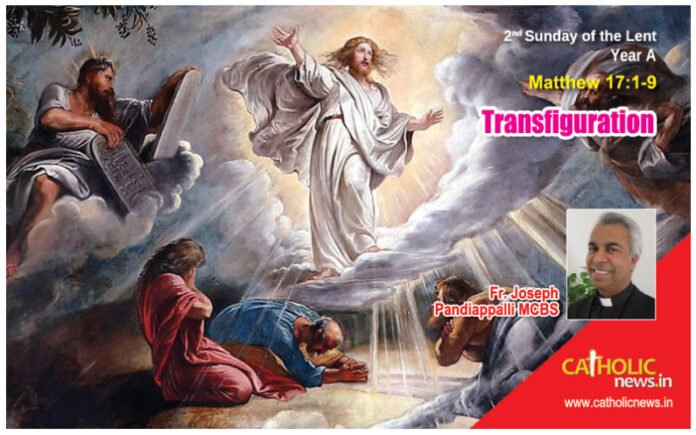
It seems that Jesus undertook many mountain hikes during his public ministry to proclaim the good news from God. In the Gospel of today we read about such a mountain hike with his three trusted disciples: Peter, Jacob and John. Through such mountain hikes Jesus distanced himself from the every day life in order to gain mental and physical strength.
It was usual for Jesus to stay on the top of the mountain and spend time to pray to God. All the avid hikers could think that Jesus himself was a hiker and they also could pray to God on the top of the mountains as Jesus did.
According to the report of the evangelist Mathew Jesus transfigured himself on the top of the mountain. The transfiguration of Jesus was a clarification for the three disciples who accompanied Jesus about the person of Jesus and his relationship with God the Father. The expernal sings of transfiguration were: the change of the face of Jesus, shining it like the sun, his cloths like radiant white, added to it the appearance of two famous personalities who lived on earth many years back: Moses and Elijah and the voice from the clouds.
I would mention a few points related to this event and to the reaction of the disciples and of Jesus:
First, The mountain: The transfiguration takes place on the top of a mountain. For the God-experience of the Jews mountain played a great role. For example, Moses met God on the mountain-top of Sinai and received the Ten Commandments. The Ten Commandments were the foundation for the social and religious life of the Jews. Abraham was asked to offer his son of a mountain. Jews believed that they could meet God on mountains and pray to God on mountains better.
Second, the persons Moses and Elija: Moses and Elija appeared to Jesus, Peter, Jacob and John and they spoke to Jesus. Moses was the leader of the Israelites who liberated them from the slavery of the Egyptians and Elija was the epitome of all the Jewish prophets. The evangelist Mathew wrote the Gospels for the Jews. Through the transfiguration of Jesus on the mountain and the appearance of Moses and Elija the evangelist Mathew wanted to proclaim that Jesus is the fulfilment of the expectations of the Jews and the promised Messiah.
Third, the suggestion to build three huts: the suggestion of Peter to build three huts for Moses , Elija and Jesus shows the close connection between the Jewish faith and the Christian faith. The report about the transfiguration of Jesus begins with the sentence, „six days after that“, which means six days after the feast of the tabernacles of the Jews, which they celebrate every year in oder to remember their forty years of life in the dessert under provisionally build huts and tents.
Fourth, the Voice from the clouds: the meeting of Jesus with God on the mount tabor is similar to the meeting of Moses on the mount Sinai. Moses was alone and Jesus was accompanied with three disciples . Moses received the Ten Commandments from God and oder from God for the judicial system of the social and religious life of the people. Jesus was confirmed that he was the beloved son of God. Every one is invited should hear him. The presence of the disciples of Jesus shows that the transfiguration was primarily for the disciples of Jesus in order to convince them about the person of Jesus himself. The were forbidden to say about it till the resurrection of Jesus means that they have to proclaims about Jesus after his resurrection out of this experience with him on the mount tabor. Jesus was convinced that after his death the proclamation of the gods news should be continued through his disciples.
Fifth: the words of Jesus not to be afraid: Jesus told these three disciple who were in fear and anxiety that the experience of God is not to frighten them, but to make them happy and joyous.
The transfiguration of Jesus was the encounter of Jesus with God. It was the experience of Peter, Jacob and John about the special relationship of Jesus with God. In every Eucharistic liturgy we experience the transfiguration of Jesus. Every participant can experience It. Many external signs and symbols could help us to deepen our experience of God. It could help us to manage the every day life. For that I wish you the readiness, good thoughts and much joy.
Fr. Joseph Pandiappallil MCBS



